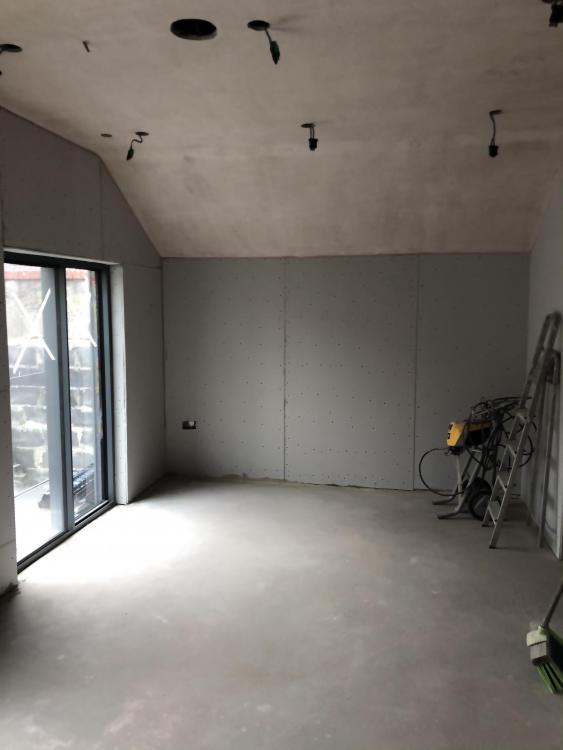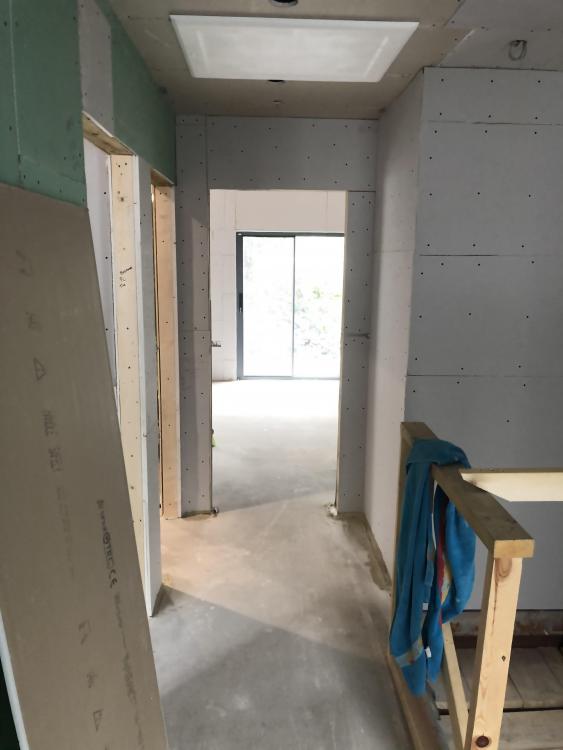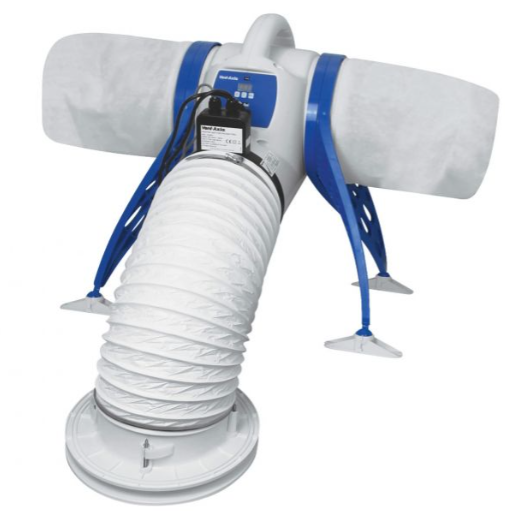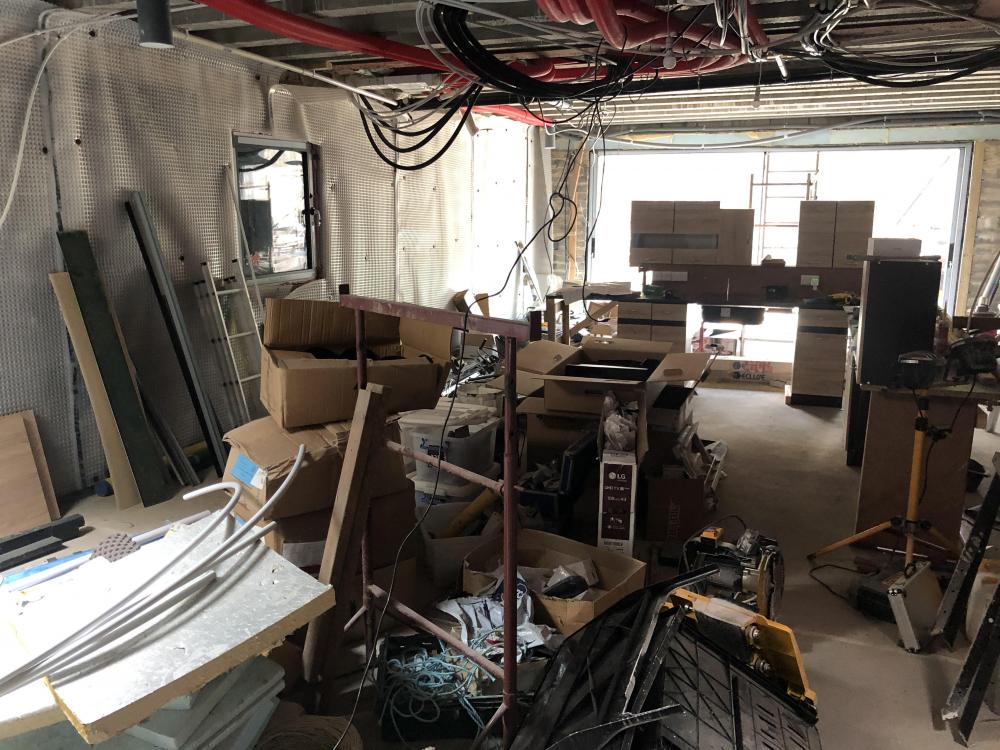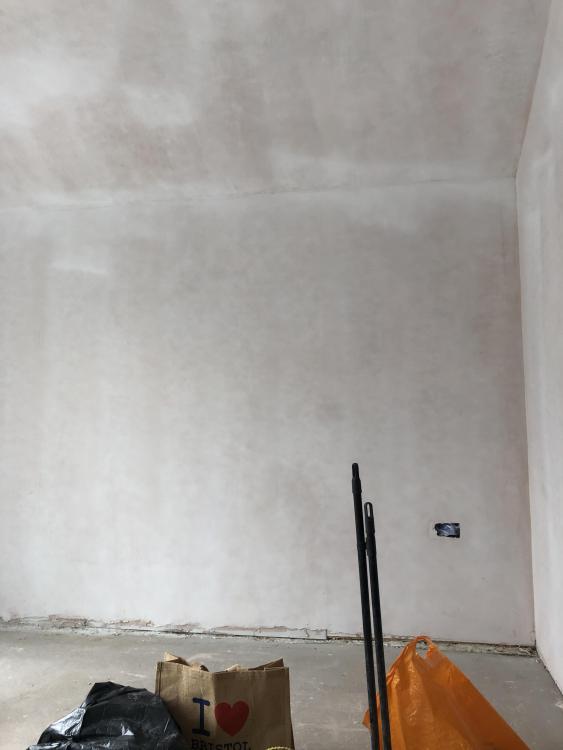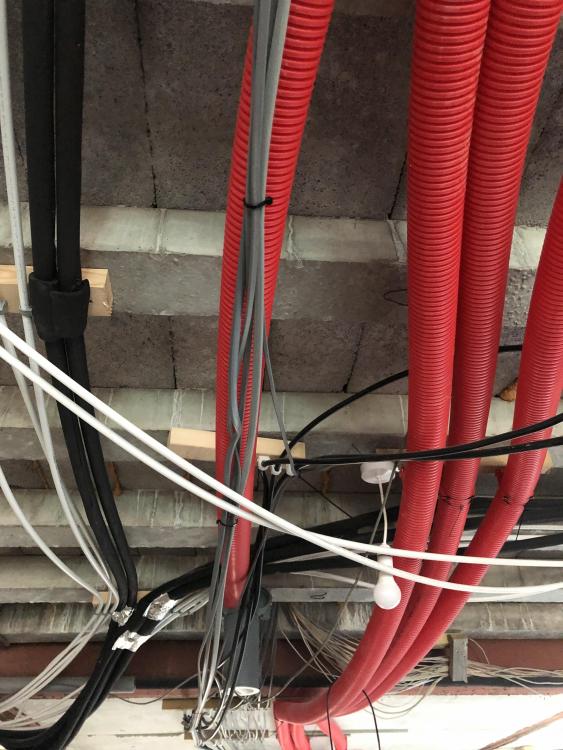Leaderboard
Popular Content
Showing content with the highest reputation on 05/26/21 in all areas
-
+1 A CLEUD has to be considered on the facts and the law where as a Retrospective Planning Application would be considered on more subjective matters, such as does it overlook the neighbours. So definitely a CLEUD first.2 points
-
You have my sympathies and this seems ridiculous. I had to deal with a slow/incompetent planning officer during a pre-application. Sometimes it is genuinely out of excessive workload/poor holiday timing/honest mistake etc. so I can see how one individual can let you down unintentionally. As a department, however, they are responsible for putting in place the necessary controls and resource to ensure that this doesn't happen systematically. All I can advise is to make a FORMAL complaint submission, outlining very clearly 1) What has been done unacceptably, and 2) what remedy you want. In my case, I essentially complained that they were impossible to get hold of and didn't respond within the councils own recommended timelines, and beyond that within a reasonable amount of time. As this was a paid pre-applicaiton, I requested in black and white: that the officer is immediately replaced with another officer to make contact with me within 3 working days by phone, and that I am refunded 50% of the application fee as I have not received a satisfactory service. I got a call from the head of the department apologising, and asking me if I do want to proceed with it as a true" formal" complaint or accept the above proposed actions. I just wanted the thing to progress so withdrew my official complaint. Got a new (very good) officer on the case within a day, and got 50% of my fee refunded. Never dealt with Edinburgh council so god knows what it's like but after a quick google, I would try the general complaints/customer care process for the council, if the Planning Department are impossible to contact directly. https://www.edinburgh.gov.uk/contact-us/comments-complaints Edited to add: Appeal against non-determination is the correct way of dealing with this, but pragmatically, will take so long that you personally won't gain anything other than moral high ground.2 points
-
Well , just watched tonight’s episode, I’m sorry to be a doubter but I don’t for one second believe they built that for 375k, I know it took 6 years and he appears to have done all the work himself but still?! I think it’s a bit unfair to show programs like this and make people think they can build a home that’s going to be worth so much more than it cost them, and if Id known 7 years ago that you would get a plot in a place like that for 65k !!1 point
-
Replace the pneumatic pipe and try again. I had this before and it was a series of micro-fractures in the pipe allowing air to escape when the flush button ( basically a set of bellows ) was pushed. Swap the pipe off one of the working ones to see if the problem migrates to the other WC.1 point
-
I shut off the power to the FTC6, waited half a minute and powered it back up and only then the cooling option appeared in the controller menu. My installer has a little ritual about powering down both the internal and external units, waiting exactly 5 mins then powering them up in some specific order to ensure they reconnect to each other, but I think (hope) that's cargo-cult. if there's a power cut in winter while I'm away I don't expect to have to send someone to dance around rebooting it in a special sequence just to get the heating working again.1 point
-
1 point
-
So theoretically you could just tell them to remove the pole from your property as there is no wayleave. Or offer to sign a wayelave if they move it to a less problematic location.1 point
-
I have the top one. I installed it in the same location you talk about but my situation was different, shite house no insulation at all and mould forming on the hallway walls as well as other rooms, After instaling this it definitely stopped the mould on the hallway walls but did little to help in other areas - can’t expect miracles. It’s virtually silent and the air is diffused by the cover over the inlet pipe. I really don’t see how these can be effective as a way of ventilation in a new house as they pump cold air into the house in the hall and in theory as the pressure rises that cold air escapes through gaps in the building therefore giving you an air change system.... in reality I think the air escaping just takes the easiest route and pretty much bypasses everywhere else. I am just in the process of insulating the house and will see how it performs then but it would NOT be my go to solution for ventilation on a new build.1 point
-
They both look a bit Noddy (or should that be NooNoo) but the Drimaster and Pozidry both cost around £300 https://www.fastlec.co.uk/ventilation/nuaire-dri-eco-hc-drimaster-eco-positive-input-ventilation-unit https://www.fastlec.co.uk/ventilation-extractor-fans/vent-axia-lo-carbon-pozidry-pro https://www.fastlec.co.uk/vent-axia-lo-carbon-pozidry-pro-fd-with-heater-multi-storey https://teletubbies.fandom.com/wiki/Noo-Noo1 point
-
1 point
-
1 point
-
I have considered that there might be some kind of complaint to be made re the treatment of older people via planning as they do not seem to consider the time taken and stress that it causes them is likely more than younger people. @MortarThePoint sorry for your dad, I really don't think they consider how their actions affect real people.1 point
-
Glass itself cannot leak unless it cracked/broken so replacing the glass is a non starter. You really need to establish where the leak is coming from which is not easy as water tends to track through the smallest crack/space. It could be the frame, the frame to roof upstand joint or the roof itself. Can you get up there and look for the smallest of holes or cracks to establish what can be done.1 point
-
1 point
-
From looking at the photo I've made some assumptions. The existing slab is old and not insulated but dry so probably has a layer of plastic under it. Maybe 70's or 80's? The door looks to be circa 150mm above this slab. You're probably planning on putting down 100mm of insulation and then 50mm liquid screed with UFH pipes. The timber stud walls therefore will be touching the cold concrete and not insulated where you're worried about the condensation. Ideally these studs would be built on top of a thermal block. I don't think I'd be worried as you're limited to the 100mm or whatever amount of insulation you can fit is and won't have a lot of air circulation within the stud wall so little chance of vapor which can condense.1 point
-
I would recommend it, I had a real issue getting waste pipes in because I didn't think to beforehand .1 point
-
I was but only because I am OCD at planning stuff, and I gave myself some leeway in case of minor errors. Most of my drain runs were in line with joists so no problem with fall and access. On the sound insulation front, it’s the only thing I would change if possible (to late now), I wish I had double boarded or/and sound bars fir the ceilings, despite 100mm of insulation between joists I am disappointed with the sound travel between floors (and I was careful to fill any gaps around the floors).1 point
-
I'd second the getting pipes in now. I know you said you're using flexible pipes for MVHR etc but what about sink wastes etc, toilet.1 point
-
Interesting - the keystone jacks I have use punch down not RJ45 style crimp connection. That said, I have successfully crimped oversized (CAT6A 24AWG) solid cores onto RJ45, just have to use the correct sort of jack designed for the larger cores, that have staggered entry holes. Excellent point about the stranded patch cables. I had assumed by opting for CAT6A patch cables I'd get thicker core cross section, but looks like they're only 26AWG equivalent (happily I've used the shortest ones I can, most are only 20 cm long so probably fine as you say) I'd be very wary about relying on MVHR for active cooling of a machine room like that. When all the gear is on I expect you'll have many hundred watts of heat being dumped, and MVHR will only shift 10s of watts at most. It's effectively useless for equipment cooling. I put an MVHR extract in the AV cupboard (with much less gear in it) and supply right outside it, and it's overheating (an, I believe, overheating the bedroom next to it - thread) so I've actually pulled the MVHR vent out of the AV cupboard ceiling and replaced with a larger extract fan to dump the heat directly into the loft. Up there I have a fan coil which provides active cooling (fed from the ASHP). I've also started relocating some of the worst offenders for heat generation out into the loft (the windows box running Blue Iris is particularly bad, and the Virgin modem and Unifi Router are also pretty poor). Regarding the slide a turn racks - I got one of these, but then had cold feet about putting the patch panel on it as I wanted the solid-core installation cables terminated in a fixed location where they'll not get flexed. Whereas the rack does get moved in and out a fair bit as I do like to tinker with the installed gear (and, I don't have the luxury of a dual access cupboard)1 point
-
Agree with the MCCB. But the previous poster advised a MCB.1 point
-
Give them a call, they were happy to answer lots of my questions. I've found them to be very helpful and pleasant to deal with.1 point
-
Not if the device is selected properly. Service panels rarely have fuses anymore, even the main incomer will be on a MCCB. We design a lot of hotels and multioccupancy resi and the submains are never on fuses these days. He isn't doing the work, his sparky will spec an appropriate device for the installation.1 point
-
Advise the bricky of this when he is quoting and let him deal with it.1 point
-
Your budget is tight, you have outline planning permission and you need 4 bedrooms in 200 sqm. If your plot is flat and not oddly shaped you could skip straight to an architectural technician who would create technical drawings ready to hand over to a builder, that is £10k to £20k saved before you start. I know an affable and approachable architectural technician in Grimsby. Where are you building in Lincolnshire roughly? BTW the prevailing forum culture here has a bit of a downer on architects as you might now be realizing.1 point
-
Doesn't RICS have a a section on there website about what to expect and how payment should happen. https://www.rics.org/uk/ The one Architect I now know gets charged extra if he wants milk in his tea, and charged even more if he does not want it. Seems fair to me.1 point
-
“Our architect produced a great design but way over the original budget. To minimise cost keep it simple.. Avoid roof complications like dormer window or 1.5 storey houses with rooms in the roof. Stick to a 2 storey house with simple roof. Even making the house L shape adds a bit although how much is debatable. Do you really need a chimney? A working chimney? Avoid anything needing steel beams or posts if possible. (eg windows that wrap around the corner of a house). Architects tend to like charging a fixed % of the final build cost. Sometimes as much as 10%. So if you splurge on a kitchen just remember to add 10% for your architect who may not have had anything to do with the kitchen. Better still find a builder you trust so you dont need an architect involved during construction other than perhaps a few hours to sort out design problems that might come up.” I agree with most of this. Keep the design simple. Rectangle house plan with short floor spans and a trussed rafter roof with a slate roof. No steelwork (SE required), no great expanses of glass, no masonry chimneys (stove if required with Selkirk flue), no steps in internal floor level (tanking required), no basements and render painted external walls. Don’t skimp on the insulation - go above and beyond the requirements. If you want to go with a timber frame talk to a timber frame supplier - they will do whatever you need and will design the wall panels and roof trusses based on the design you present to them. You need to balance the cost and erection speed of a timber frame with a traditional masonry build. Both have advantages and disadvantages which only you can decide upon. In relation to architects fees - many do base this on a percentage cost of the build. Many others will be happy to agree a fixed cost fee based on providing a particular service to you. You are the only person to decide if you are getting value for money but you may wish to shop around. Many architects will be more than happy to have a chat with you about what you need, what they can provide and what the cost is likely to be. My own suggestion would be to agree a fixed price fee - not one based on a (possibly fluctuating) build cost - for their services. The fee should include all expenses (excluding statutory fees) and a list of your requirements - a shopping list of what you want. An architect should provide you with a written agreement of what you require including the fee to be charged. Fees are a very emotive topic for many architects and can mean a certain amount of crystal ball gazing in relation to the amount of work they will have to do.1 point
-
Your larger, newer house, will also benefit from having a better wall to floor area ratio. Heat loss should really be calculated like air loss, on the total surface area, not just the habitable floor area.1 point
-
Weeks 4 and 5 of the build saw our basement slab being poured. it was a major milestone for us and we're really happy....well, apart from the section that was too high and they needed to grind it down of course, but apart from that we're really happy. ? We have 200mm EPS300 specified for under the slab and this was laid by using a long telescopic rule from the profile board strings 4m above at ground level. We are supposed to have a 200mm toe outside the slab and luckily I was outside when the basement contractor's engineer came for a site visit to set out for the slab and I asked if it was square and was told it was a bit off in one corner. a bit off turned out to be 70mm. now, in my mind if a structural engineer tells me that the 200mm toe is needed to take the 45° load from the walls above then you really should have a 200mm toe and 130mm just wouldn't cut it. you'd think that wouldn't you? but, it turns out that unless I was there to ask them to move the insulation so that I had the correct toe all around it it wouldn't have been done as the corner points had already been marked. I got a few huffs and whinges about 'but we've already set out' but there was no way I was letting it slide and made sure I was happy with the toe widths. This just goes to show the importance of living on-site as I pop out every hour or so to get a break from my desk to see what's been going on. if I didn't do that I wonder what else might get missed and just covered up? Anyway, after the corners were set out the FIS waterproofing membrane (http://www.fisproducts.co.uk/product/maxiprufe-plus-2/) was put down on top of the EPS300 as this will then join the same membrane on the walls to form a waterproof wrap around the basement to ensure Type A protection and with the Type B waterproof concrete that will give us our 2 forms of waterproofing. Following that was the formwork, steel bar and mesh, hydrophilic strips (http://www.fisproducts.co.uk/product/cemflex/) and kickers and then we were ready for the concrete. The day of the slab pour came and we were extremely excited. It was though, as I’m sure it is in most cases, a very last minute dash to get ready for the pour. The contractors were let down by a couple of extra pair of hands on the morning of the pour so they were rushing around finishing off bits in between lorry loads of concrete. it all worked out ok in the end though. We took loads of photos as well and here are some for your enjoyment. The waterproof membrane on the EPS: Formwork almost complete: Steel mesh: kickers almost finished. the final ones in the courtyard (to the right) were done on the day of the pour: The shuttering for our sump in the courtyard: first lorry load: almost there: finished: sadly the weather turned a bit for the worse during the pour and the finish isn't perfect so we'll probably have to put a self-levelling screed down but we can cross that bridge when we get to it. the next morning: After they struck the slab formwork they made a start on the wall rebar. it's only now that I see it up that I realise how bloody high the ceilings will be! 3m was the request and that is what I got. painting them will be fun. ? I did create a video for these last couple of weeks but as all the work was predominantly down at the bottom of the big hole and the camera didn't really catch it all I've sped the footage up quite a bit. Still, I think it's a pretty good watch and you can certainly see a large portion of the work that was done. (Please note that the music has explicit lyrics so you are forewarned) This week they’re starting on putting up the formwork for the walls and we’re hoping to get a pour in towards the end of the week which will be great. I was told that the walls should take about 3 weeks in total so we should really see some great progress over the next few weeks. As always, thanks for taking the time to read our journey.1 point
-
1 point
-
0 points
-
0 points
-
0 points
-
It's a lot of a short span, but on a long one its pretty small. Bear in mind its not going to be deflecting up and down on a daily basis but is going to get loaded out and deflect. I think you'd fall over if a floor deflected by 12mm whilst you walked on it. @SuperJohnG could probably hold River Dance lessons on that floor.0 points
-
0 points
-
it's a great idea but is anyone really that organised that they know exactly where all the plumbing waste is going to be BEFORE the first floor walls are up? pretty sure I won't be.0 points
-
If you'd doubled up again you wouldn't need any OSB3 ? It'll be nice a firm though0 points
-
There is no direct line to our planners also They are charging a £150 to answer each question via email0 points
This leaderboard is set to London/GMT+01:00





